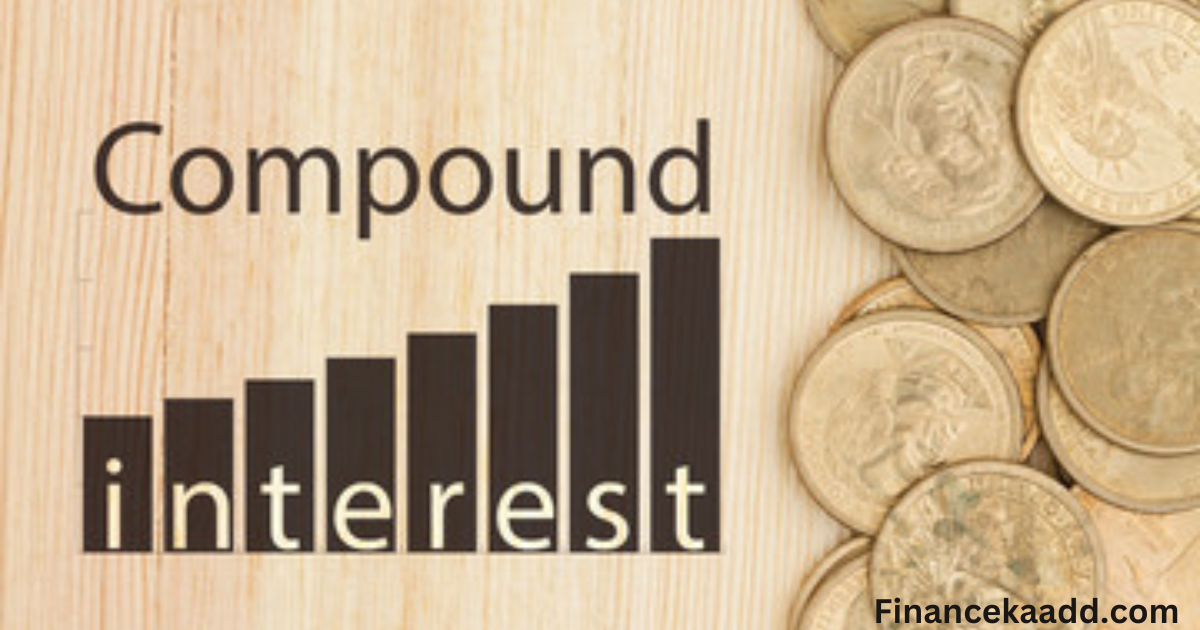The power of compound interest stands as a pivotal mechanism in the financial world, offering the potential to magnify returns significantly over time. In this discourse, we unveil the transformative power of compounding through the lens of a renowned mutual fund scheme.
The power of compound interest in the Mutual Fund
Enter Axis Bluechip Fund, a heavyweight in the realm of large-cap equity funds. Launched on January 5, 2010, this fund has demonstrated an impressive annualized return of 17.72 percent. Picture this: had you invested ₹1 lakh at its inception, your investment would have burgeoned to a staggering ₹24.33 lakh by December 29, 2023¹.
Delving into the Fund Dynamics
The Axis Bluechip Fund strategically allocates its assets across a portfolio comprising 25 stocks, with key holdings including Reliance Industries, HDFC Bank, Infosys, ICICI Bank, and TCS. With an equity allocation of 97.89 percent, supplemented by prudent investments in debt and cash instruments, this fund ensures a balanced approach to wealth creation.
Demystifying Compounding Mechanics
Let’s embark on a journey to comprehend the mechanics of compounding using a hypothetical scenario: Imagine investing ₹1 lakh in the fund at its inception, opting for the growth option to reinvest all dividends and capital gains.
The growth option, devoid of dividend payouts, channels all earnings back into the fund, bolstering its net asset value (NAV). At the fund’s launch, with an NAV of ₹10, your ₹1 lakh investment translated to 10,000 units. Fast forward to December 29, 2023, and your 10,000 units would have metamorphosed into a wealth of ₹24.33 lakh.
RICH DAD POOR DAD {ENGLISH}👉BUY NOW
Unveiling the Power Equation
Utilizing the compounding formula FV=PV×(1+r)n, where FV is the future value, PV is the present value, r is the annual interest rate, and n is the number of years, we validate the ₹24.33 lakh future value of your investment:
FV=100000×(1+0.1772)¹⁴
FV=100000×24.328
FV=2432800
Unlocking the Compounding Advantage
The exponential growth showcased in the aforementioned example underscores the prowess of compounding. Contrast this with a fixed deposit yielding 6 percent per annum: over 14 years, your ₹1 lakh investment would have merely amounted to ₹2.52 lakh.
Furthermore, compounding serves as a shield against inflation, preserving the real value of your wealth amidst rising prices. Inflation, averaging 6.23 percent annually, erodes the purchasing power of cash holdings. A ₹1 lakh stash in 2010 would have dwindled to a mere ₹38,900 in real terms by 2023.
In stark contrast, your ₹1 lakh investment in the Axis Bluechip Fund would have ballooned to a real value of ₹6.32 lakh by 2023, signifying not just nominal growth but tangible wealth appreciation.
While compounding presents an enticing proposition, it necessitates patience, discipline, and a long-term outlook. The journey demands a steadfast commitment to staying invested, resisting impulsive withdrawals, and reinvesting dividends and capital gains.
Moreover, compounding’s efficacy hinges on market dynamics and fund performance, rendering it non-guaranteed. Prudent investors must conduct thorough due diligence, diversify their portfolios, and embrace risk-aware strategies to navigate the uncertainties.
Final Verdict: Embrace the Compounding Advantage
Compounding emerges as a potent tool for wealth creation, provided one treads the path with diligence and foresight. While the rewards are compelling, they are not devoid of risks. Hence, align your investment choices with your financial objectives, risk tolerance, and time horizon, ensuring a prudent approach to wealth accumulation.
AXIS MUTUAL FUND👉APPLY NOW
Investing in mutual funds comes with its share of risks, which investors must be aware of before diving in. Here are some of the common risks associated with mutual fund investments:
Market Risk: This risk stems from fluctuations in the market value of the securities held by the fund. Factors like economic conditions, political events, and natural disasters can impact market performance. Market risk affects all assets in the market and cannot be eliminated entirely, but diversification across asset classes, sectors, and regions can help mitigate it.
Liquidity Risk: Investors may face difficulty selling or redeeming their fund units at desired times or prices. This risk is higher for funds with investments in illiquid securities or those with lock-in periods, like ELSS funds. Investing in funds with high trading volume and flexible redemption policies can help manage liquidity risk.
Concentration Risk: Overexposure to specific securities, sectors, or themes can lead to losses. Funds focusing on a narrow range of securities, such as sectoral or thematic funds, are more vulnerable to concentration risk. Diversified funds spread investments across various sectors and themes, reducing concentration risk.
Credit Risk: The default or downgrade of debt securities’ issuers held by the fund poses credit risk. Funds investing in low-quality debt instruments like corporate bonds are more exposed to credit risk. Choosing funds with investments in high-quality debt instruments can lower credit risk.
Interest Rate Risk: Changes in interest rates can impact debt securities’ prices inversely. Funds investing in long-term debt securities are more susceptible to interest rate risk. Opting for funds with investments in short-term debt securities can minimize interest rate risk.
Inflation Risk: This risk arises from the erosion of purchasing power due to inflation. Investments in low-return assets like fixed deposits or savings accounts are more susceptible to inflation risk. Investing in high-return assets such as equity funds or real estate funds can help combat inflation risk.
Managing these risks involves understanding your risk appetite, conducting thorough research before investing, diversifying your portfolio, monitoring it regularly, and adopting a long-term investment approach. By following these steps, investors can navigate the complexities of mutual fund investing more effectively and potentially mitigate the associated risks.
THE INTELLIGENT INVESTOR {ENGLISH}👉BUY NOW
The expense ratio of mutual funds represents the annual fee that investors pay to the fund manager or the asset management company (AMC) for managing and operating the fund. It is typically expressed as a percentage of the fund’s average assets under management (AUM). This ratio encompasses various costs, including management fees, administrative expenses, distribution fees, legal fees, and audit fees. Consequently, the expense ratio directly impacts the returns earned by investors from the fund.
On average, actively managed mutual funds tend to have expense ratios ranging between 0.5% and 1.0%, rarely exceeding 2.5%. However, this ratio can fluctuate depending on factors such as the fund’s type, size, and performance. Generally, equity funds exhibit higher expense ratios compared to debt funds, while small-cap funds typically incur higher expenses than large-cap funds. Furthermore, changes in the fund’s AUM, expenses, or regulatory requirements can also influence the expense ratio over time.
While the expense ratio is a crucial consideration for investors, it should not be viewed in isolation. Other factors, such as the fund’s performance, risk profile, portfolio composition, investment objectives, and suitability, also warrant careful evaluation before making investment decisions. While a lower expense ratio translates to reduced costs for investors and potentially higher returns, a comprehensive assessment of the fund’s overall characteristics is essential for informed investment choices.
Frequently Asked Questions (FAQs) About Mutual Funds
Q. What are mutual funds?
Ans. Mutual funds serve as investment conduits where funds from numerous investors are amalgamated to create diversified portfolios encompassing stocks, bonds, or other securities. These funds are overseen by seasoned fund managers entrusted with the responsibility of making investment choices on behalf of the investors.
Q. How do mutual funds work?
Ans. Mutual funds work by collecting money from investors and investing it in a portfolio of assets, such as stocks, bonds, or a combination of both. The returns generated by these investments are distributed among the investors based on their proportional investments in the fund.
Q. What advantages do mutual funds offer for investors?
Ans. Some benefits of investing in mutual funds include diversification, professional management, liquidity, accessibility to various asset classes, and the potential for higher returns compared to individual stock or bond investments.
Q. What are the different types of mutual funds?
Ans. Mutual funds can be categorized into various types based on their investment objectives, asset classes, and risk profiles. Common types include equity funds, debt funds, balanced funds, index funds, sector funds, and thematic funds.
Q. How can I invest in mutual funds?
Ans. Investors can invest in mutual funds through various channels, such as mutual fund companies, online platforms, banks, and financial advisors. They can choose between direct plans, where they invest directly with the fund house, or regular plans, where they invest through intermediaries.
Q. Which aspects should be taken into account before making investments in mutual funds?
Ans. Before investing in mutual funds, investors should consider factors such as their investment goals, risk tolerance, investment time horizon, fund performance, expense ratios, fund manager expertise, and the fund’s investment strategy.
Q. What is the expense ratio of mutual funds?
Ans. The expense ratio of mutual funds represents the annual fee charged by the fund manager or the asset management company (AMC) for managing and operating the fund. It’s denoted as a fraction of the average assets under management (AUM) of the fund.
Q. How is the expense ratio calculated?
Ans. The expense ratio is calculated by dividing the total fund expenses by the average assets under management (AUM) of the fund. The formula is: Expense Ratio = Total Fund Expenses / Average AUM.
Q. What are some ways to reduce the expenses of mutual funds?
Strategies to reduce mutual fund expenses include selecting funds with low expense ratios, opting for passive investing through index funds or ETFs, choosing direct plans over regular plans, and monitoring and reviewing investment costs regularly.
Q. What is the difference between a growth option and a dividend option in mutual funds?
Ans. The growth option reinvests profits back into the fund, leading to capital appreciation, while the dividend option distributes profits to investors in the form of dividends. Investors should consider their income needs, investment goals, and tax implications when choosing between the two options.


